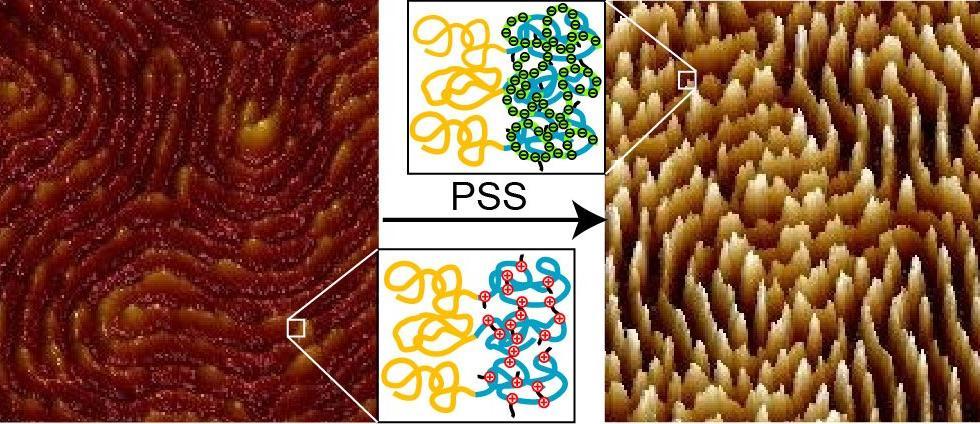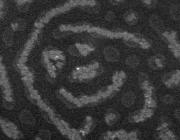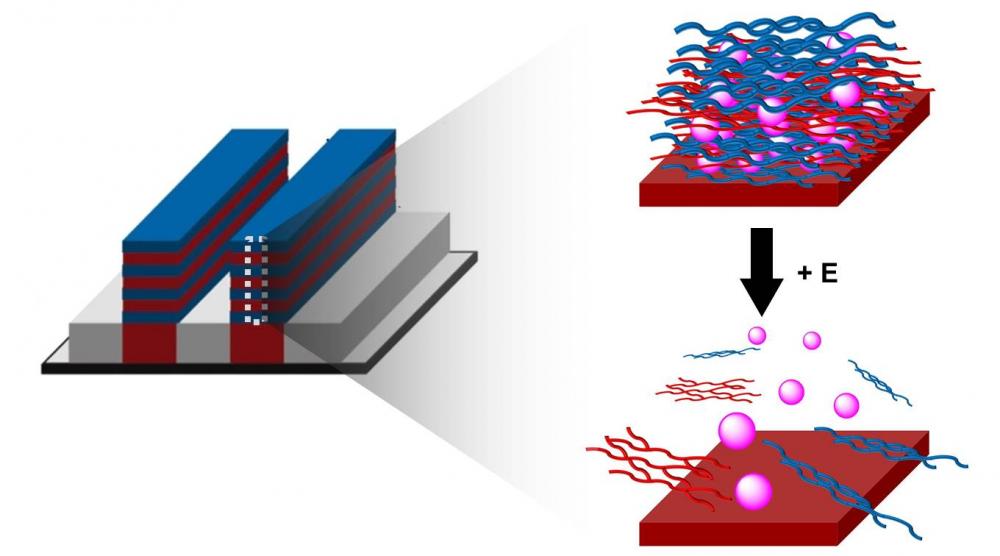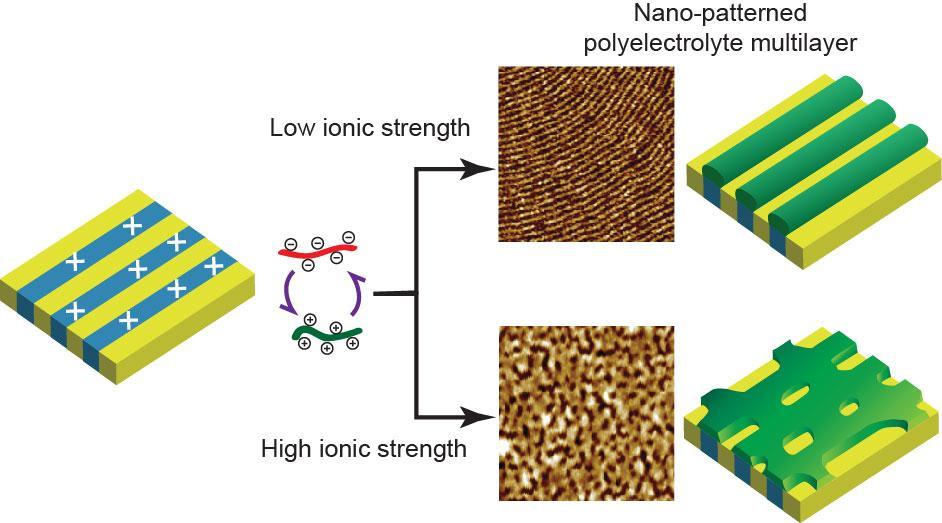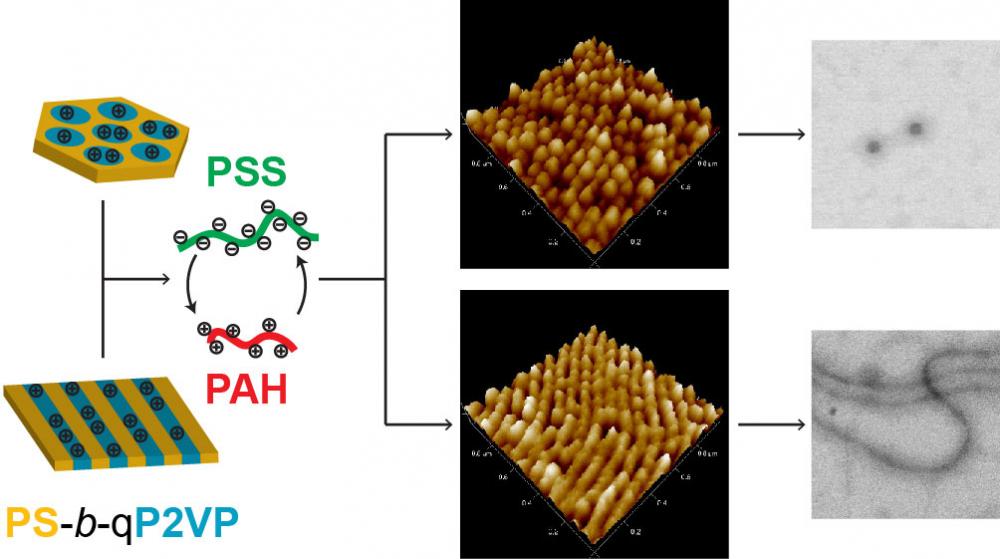Chandaluri, C. G. ; Pelossof, G. ; Tel-Vered, R. ; Shenhar, R. ; Willner, I. Block Copolymer Patterns as Templates for the Electrocatalyzed Deposition of Nanostructures on Electrodes and for the Generation of Surfaces of Controlled Wettability.
ACS Applied Materials & Interfaces 2016,
8 1440-1446.
AbstractITO electrodes modified with a nanopatterned film of polystyrene-block-poly(2-vinylpyridine), PS-b-P2VP, where the P2VP domains are quaternized with iodomethane, are used for selective deposition of redox-active materials. Electrochemical studies (cyclic voltammetry, Faradaic impedance measurements) indicate that the PS domains insulate the conductive surface toward redox labels in solution. In turn, the quaternized P2VP domains electrostatically attract negatively charged redox labels solubilized in the electrolyte solution, resulting in an effective electron transfer between the electrode and the redox label. This phenomenon is implemented for the selective deposition of the electroactive Prussian blue on the nanopatterned surface and for the electrochemical deposition of Au nanoparticles, modified with a monolayer of p-aminothiophenol/2-mercaptoethanesulfonic acid, on the quaternized P2VP domains. The patterned Prussian blue-modified surface enables controlling the wettability properties by the content of the electrochemically deposited Prussian blue. Controlled wettability is unattainable with the homopolymer-modified surface, attesting to the role of the nanopattern.

